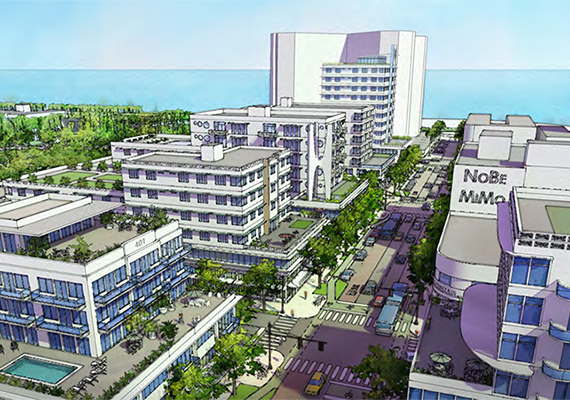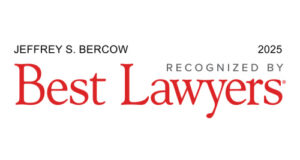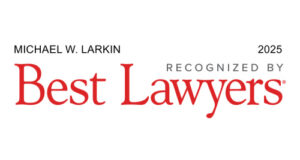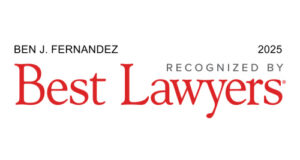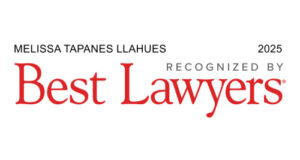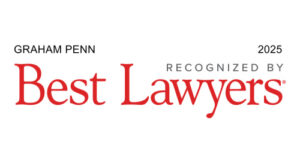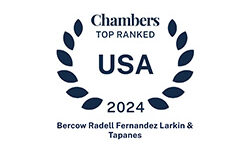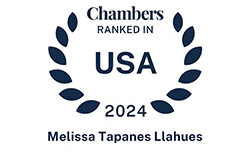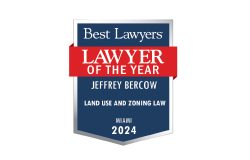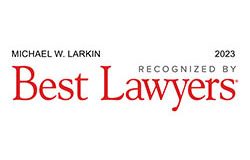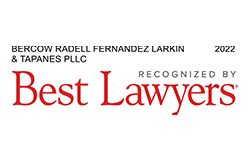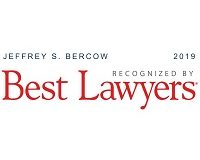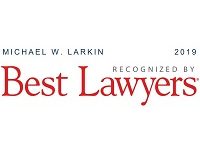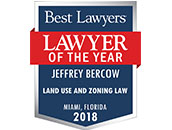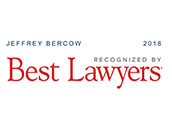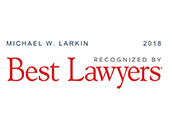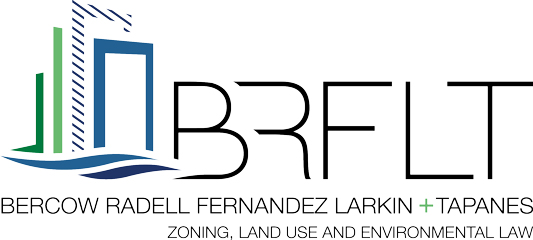Town Center Development Guidelines Move Forward
August 14, 2018The proposed guidelines for developing the North Beach Town Center to incorporate the increased density approved by Miami Beach voters last fall are going to the full Commission for consideration next month. In the meantime, the ordinance will make another stop back at the Commission’s Land Use and Development Committee to further refine recommendations for height increases and co-living spaces.
City Staff has proposed allowing an increase in height up to 200 feet. Last month, the Planning Board recommended an increase in height of up to 220 feet as requested by developers. The Board also recommended a reduction in the shared amenity space for co-living buildings and an increase in the amount of time developers would be exempt from making a public benefit contribution in exchange for the higher height.
In a nearly three-hour discussion, the Land Use Committee rejected those changes and gave direction for developing a staggered height model that would concentrate the tallest buildings in the 71st and 72nd Street areas while maintaining a lower height near the more residential areas of 69th and 70th Streets.
A good portion of the discussion was devoted to the concept of co-living units, smaller units with shared amenity spaces. Planning Director Tom Mooney said, “We wanted to look at providing as many options as possible as far as residential living goes.”
“One of the emerging trends in residential living is what’s commonly referred to as the co-living or micro-unit concept,” Mooney said. “We define co-living as a smaller unit that may or may not have a full kitchen within the unit but would have amenity spaces. This concept of living is basically designed for smaller families. It could be one or two people who don’t spend an awful lot of time in their residential unit but don’t desire to live in a much larger residential unit.”
“This provides an opportunity and a housing option for millennials, empty nesters, even the elderly who are not looking for a large residential project,” he continued. “In our experience, and based upon discussions with those in the market, unless there is a market for this type of housing option, it’s difficult to get the financing for it and most people are just not going to invest the sums that are needed unless they believe there’s a market for it. This isn’t to say that the area’s going to be overrun or that there’s going to be a lot of these projects but we felt that having the option would be good for the area because these types of units also generally have less of a traffic impact. They are typically resided in by people who want to spend more time within the area because it’s a more walkable area and it’s the type of unit that would expand the variety of residential units that are available.” The minimum unit size in the proposed ordinance is 375 sq. ft.
Commissioner Ricky Arriola said, “At the end of the day, the free market, the private market is going to decide whether or not these are viable. No bank’s going to finance a project in which people aren’t going to want to live this way. For us, if there is a demand, and people want to live this way and banks are willing to finance these types of projects, then that’s what the market says and we then have to decide as policymakers what are the benefits and the repercussions to this kind of model.”
“In my mind, if we’re increasing density in this area, we need to make sure that we fulfill a lot of other obligations that fall upon the City which is things like mass transit, walkability and those kinds of things,” Arriola said. “Because if you have a lot of people living in a very dense area and there’s no mass transit or there’s no place for them to shop or work, they have to get in their car, it creates a whole litany of other problems. So, this is a package deal. I’m definitely open to exploring this but I want to make sure if we say yes to this kind of micro living that we’re also addressing mass transit, walkability, potentially parking, and those kinds of things.”
“One of the things that we’ve tried to emphasize,” Mooney said, “is that the entire overlay is one big package and it all works together. We’ve got a lot of recommendations and requirements for minimum sidewalk widths, activating every street, requiring a minimum amount of aggregation so that it becomes a multi-component overlay because, you’re right. If you just fill it up with all residential, it’s not going to be successful because they’ll have no place to go. If it becomes all commercial, it doesn’t become as desirable from a residential standpoint. So, it all works together so that people can walk and they can use alternative modes of transportation.”
Arriola said, “We’re losing our millennials. They’re moving across the Bay or other places… this is a foothold to living in Miami Beach… demographically it makes a lot of sense to me. if we deal with walkability, true mixed use in the overlay, there could be an interesting market for this.”
Commissioner Michael Góngora struggled with the concept. “I have a hard time imagining that anybody would want to live in a 375 sq. ft. space with no kitchen,” though, he said, “I’m trying to keep an open mind to it.”
“I want to make sure that we’re really doing something that brings families,” Góngora said. “While I would like to see millennials come there, I think what was promised to a lot of people that came out to support and vote for this [increase in density for the Town Center] is that this was going to be something that was going to bring families to the area and balance residential life with commercial life and I want to make sure that Planning Staff – and that we as a Commission – really fully consider is this a balanced ordinance or are we potentially setting up a short term rental market because that’s something I wouldn’t want to do. I want to make sure that whatever version of the ordinance ultimately gets embraced would ensure a balance of families and millennials.”
Mooney said, “Right now, under the Code, the balance is tilted the other way” with the average unit size of 800 sq. ft. A family that can afford those units, he said, is more likely to move to a townhome or house. “And in our experience, what typically happens is they become luxury units,” Mooney said. “By reducing the unit sizes, you’re developing more options which we believe will create a better balance.”
That said, “If somebody wanted to do larger units, they can,” Mooney continued. “This adds a lot more diversity to the types of residential housing options and we do believe that addresses the need for the balance.”
North Beach resident Betsy Perez told the Committee members she is now trying to help her millennial children find places to live. “I’m trying my best to find something in North Beach,” she said. “Where are they focusing? Downtown. There are micro units downtown” in an area that “is packed with young professionals. They’re living there. They don’t have cars. They’re all focusing on that one area, so my kids are looking over there and it makes me sad. I want them to stay on North Beach.”
Committee Chair John Alemán referenced her early days in Miami Beach more than twenty years ago with a roommate because she wanted to live in South Beach but couldn’t afford to pay the rent herself. “My roommate and I shared a kitchen and had private space in our bedrooms,” she said. “I think for young people it’s very common, but we’ve given it a very modern name as co-living. But the idea of living together, having private spaces and shared spaces, for young people is not that unusual. We just call it by different terminology.” She also shared her grandmother’s experience living in a micro-unit in Sarasota. “She says she loves it because when she wants to be alone, she has her private space and when she wants to be with others, she’ll grab her Kindle and go downstairs for socializing.” Co-living in the Town Center would mean residents would be “two blocks from the beach, across from a park. That can be very attractive,” Alemán said.
Regarding Góngora’s concerns about short term rentals, City Staff confirmed the area currently allows short term rentals which the City does not have the ability to restrict. Góngora said he was uncomfortable with the potential and suggested capping the number of co-living units at 10% of the maximum number of new residential units which could be created under the ordiance. That number is 3,125. There is also a potential for 2,000 hotel units to be created.
Mooney said, “Ultimately putting a cap on it is a policy decision. The only thing that I would suggest is that if there is going to be a cap of some type that it be larger, at least until you see what the market dictates. At this point we don’t know what the market is going to dictate. The market, as everybody knows, is going to change over time so one of the things that we were careful about is to not be too restrictive in terms of how these units are allocated. We did not want to begin to interfere with the market.”
Jerry Libbin, President of the Miami Beach Chamber of Commerce, said, “I think you should be careful about setting too many hard edges until you really see what the market will bear… you’re focusing a lot of time and attention on what could be 10% of the units [proposed for the Town Center] and I do think they’re important. I know that my daughter being a millennial, there’s no way that she could afford to come to North Beach nor is there a product that would attract her and perhaps these kinds of products would attract millennials.”
“Miami Beach was just named one of the top ten cities for STEM jobs in the country,” he added. “Wouldn’t it be great if these young bright people came and moved into North Beach? Even if they’re at 70 and 80,000 dollars, which is roughly where those jobs are, they’re not moving to South Beach. You can’t buy a condo on an $80,000 salary. Great salary for a young person, but it’s also not enough to go buy a condo in South Beach or housing in Mid-Beach. I would encourage you to move forward with the micro units… I think it’s unique. I think it is cutting edge. It is happening around the country. We pride ourselves on being a cutting-edge city and there’s no reason we shouldn’t allow this and focus more of your time and attention on the 90% of the units and see how we can incentivize development in this area.”
Jordan Kramer, a member of the Chamber’s Millennial Action Council, addressed the short term rental concern. “Most of these operators operate with 30-day minimums. It’s the way that their models work and can be financially viable. Obviously, there’s always the possibility for that [but] most of the models out in the market, Common, WeLive, etc., have those minimums in order for their business models to really work.”
North Beach investor Matis Cohen said of the co-living units, “It’s a small but important component of Town Center because accessibility, attainability are our guiding principles.” He said he had no issue with capping the number of units at 10% initially. “I think we all have these fears of these short term rentals which this is totally not about,” he said. “It’s about creating the ability for every socio-economic level to have access to live in Miami Beach” with co-living units as a starter residence then gradually growing into larger dwellings within the community.
“It’s about getting bodies on the street,” Cohen said. “It’s not about hiding in your apartment. It’s not about creating the experience in the home but mostly in the community. And once you’ve established that you’ve created a base that you like to live in North Beach, then you can move into an apartment, you can move into a house, you can move into the whole area and stay there. That’s the whole idea of that co-living. Let’s not let the tail wag the dog because the rest of the Town Center is residential. The idea is to incentivize residential living.”
Arriola said, “If we do this right, it will become a model. Certainly, for Dade County. We’re following some leading-edge cities… I think all of you have heard me complain how Miami Beach has been stuck for a couple of decades so if we adopt an ordinance along these lines, it’ll show us to be that progressive city. But it’s an experiment. This is brand new stuff and this is architects and urban planners trying to project how people want to be living in the 21st century.”
“But I do think I want to be mindful that whatever we do, at the end of the day, this should be a package deal,” Arriola reiterated. “Meaning, if we allow for micro units we have to consider what we’re going to do with parking. We have to deal with retail because people want to, I’m certain of this, people who want to live in the micro units want to be living in an urban core experience where they don’t have to get in their car and drive somewhere, maybe not even have a car. That means the amenity package has to be there as well, retail, as well as office and other mixed use daily needs… I think it will be fascinating. I do think if we pull this off North Beach is going to really come alive. I’m very excited about it.”
Then it was on to the height discussion. Michael Larkin, attorney for Cohen and fellow investor Robert Finvarb, said an increase in height is necessary to allow taller towers that “allow light and air on the street below. Otherwise you’ll have blocky style tenement housing that will block light and air, a 21st Century version of condo canyon that some of you know far too well. It’s in Mid-Beach along Collins Avenue. We don’t want that. We’re desperately trying to avoid recreating that.”
Planning Staff has recommended 200 feet. The developers would like 220 feet. Currently in the TC-1 district, height is allowed to be 125 feet and the North Beach Master Planners recommended the 125-foot height be allowed to expand further into the Town Center area. City Staff and the developers do agree that a height increase would allow for a better distribution of the increase in the FAR (floor area ratio or density) approved by voters last November.
Larkin said if the Commission were to “push down the additional FAR to these square boxes that are 125 feet in height you will certainly regret it because it’s going to lead to the most awful result where you want Town Center to be revitalized in a beautiful way.” He noted taller towers could be limited to certain geographic areas of Town Center and by lot size.
Arquitectonica’s Ray Fort, who is also working with Cohen and Finvarb, said that in his analysis, 220 feet is the “optimal height” but that the majority of buildings in the Town Center would end up being 55 feet based on lot size and what could physically be constructed. “There are only three sites that could achieve 220 feet,” Fort said. Very few sites could be aggregated in a size large enough to actually build that tall.
Arriola said, “There’s just lots of people out there in the community that are naysayers that don’t know the facts. They make up facts and they say this is going to turn into Sunny Isles and it’s just not true. You can’t do it. We have experts that can do math and show that it can’t be done. So folks that think this is going to be a condo canyon, bring facts forward so we can debate it but otherwise if you don’t have facts stick to what’s realistic. The most that’s going to happen would be three of these, assuming a developer even wants to do 200 foot buildings.”
Alemán referenced the Master Plan recommendation of 125 feet. “Dover Kohl [creator of the Master Plan] didn’t do the massing studies,” she said. “We didn’t pay them to do the massing studies that now our Planning Department has done. And now you’re confirming that you have done as well” she said to Fort. “So we now have two separate sets of planning experts that have actually done the massing that Dover Kohl just wasn’t paid to do. It’s not that they weren’t capable of it, we didn’t ask them to. It wasn’t in their scope of work.” The result, she said, “This unreasonable expectation was set as a part of that process for what 125 feet was really going to look like” based on drawings in the plan. Now, she said, both Planning Staff and Arquitectonica show massing studies with the lower scale buildings needing to span an entire block in order to use the allowable FAR which creates a “wall effect”.
“There wasn’t an intentional miscommunication but it has happened,” she said.
Cohen said, “This is a discussion about distribution of FAR and not FAR. It’s about being appropriate. The Master Planner had very nice illustrations that were not based on architectural analysis or feasibility.” He called the City’s Planning Department “very conservative” adding, “For them to do this work that they did and not just do it in a vacuum, but to go out to other cities around the world, around the country and to actually see practically what is working, what isn’t working and use successes and failures from these other cities is something we need to really support.”
Góngora said, “We are moving this forward and we want to see something happen. I was very concerned about the height… because it is changing significantly from what it was.”
“I was opposed at the last meeting to height above 125 feet and I remain concerned about height,” he said. “I understand that it’s just one component. You’ve got to look at height with length and look at everything kind of holistically as to what you can build, but I think height is a simple thing for people to understand and they’re concerned when they see buildings getting taller and taller and taller in the area.”
“I’m open for the first time to consider height beyond 125 feet but there’s some things that I would like us to consider,” Góngora offered. “Stagger the height by lot size. If we’re going to consider going above 125 feet then it should only be for bigger lots.” And, he said he wanted to limit the tallest buildings to the commercial corridor on 71st and 72nd Streets.
Arriola said, “I’m not freaked out by height. There’s plenty of buildings in the neighborhood that are at least as tall. Personally, I’d rather see height than just concrete walls… I don’t like walking through neighborhoods and not seeing sunlight anywhere or green space. The tradeoff that you can go vertical to create green space is very appealing to me.” He was open to Góngora’s idea of limiting height by lot size and keeping the tallest towers to 71st and 72nd Streets.
“One of my top objectives in trying to finalize the overlay is the pedestrian experience and just the livability of the Town Center,” Arriola said. “I want to make sure these neighborhoods are as livable as possible, that people get out of their cars and walk the neighborhood.”
The Committee supported Góngora’s recommendations for exploring revisions to the draft ordinance that would cap height at 200 feet and stagger it by lot size. They asked Staff to come back with thoughts on his proposal that on lots less than 25,000 sq. ft., the maximum height would be 125 ft; between 25,000 and 50,000 sq. ft., maximum height would 165 feet; and for lots of 50,000 sq. ft, height could reach 200 ft with certain public benefits (still to be defined) with the taller buildings limited to 71st and 72nd Streets. His proposal includes an exemption from paying a public benefit if a project received a full building permit within 15 months of the ordinance taking effect.
Góngora also suggested capping the number of co-living units at 10% of the 3,125 maximum residential units that could be constructed under the ordinance. He would keep the shared amenity space in the co-living units at 20% of the overall building as recommended by Staff.
Because of public notice requirements, the item will be advertised for the September 12 Commission meeting as is but is expected to be refined at the September 5th Land Use meeting after Staff has reviewed Góngora’s proposal. A substitute ordinance will then be placed on the agenda reflecting what the Committee agrees to on September 5th.
“I’m very apprehensive about height,” Góngora told Staff, “but I try to remain open minded that you are the professionals, that you make recommendations to us… and I take that to heart.”
The ordinance will require a 5/7 vote of the Commission. It can be found in its current form, here.
